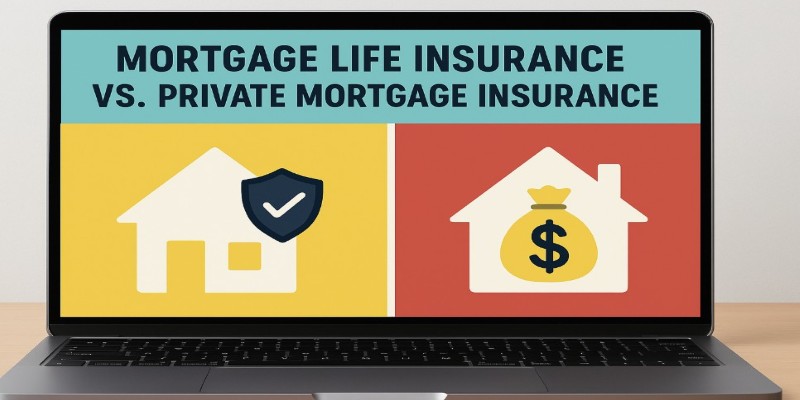Buying a house is a big deal—no matter how ready you think you are, it's easy to get overwhelmed. Between mortgage terms, inspections, offers, and everything in between, there's a lot going on. But despite what you might hear, it doesn't have to be a confusing mess. The truth is that buying a house is largely about understanding the process, remaining patient, and having a clear game plan.
This guide walks through the key steps involved in buying a home, explained in a way that actually makes sense. Whether you're buying alone or with someone else, let’s break it down and make it doable.
Get Your Finances in Order Before Anything Else
Before you start scrolling through real estate listings or dreaming about backyard barbecues, get your money situation sorted. That means taking a good, honest look at your credit score, your current savings, and what you can realistically afford. A lender will want to see your full financial picture, including income, debt, savings, and employment history. Most of all, they'll want to know you can handle the responsibility of a mortgage.
The down payment is the biggest chunk of money you'll need upfront, and how much depends on the kind of mortgage you qualify for. While 20% is ideal for avoiding extra fees, many buyers put down much less. You’ll also need to factor in closing costs, which can range from 2% to 5% of the home’s purchase price.
Getting pre-approved for a mortgage is the first real signal that you're ready to buy. It shows sellers you’re serious and gives you a solid price range to shop within. Pre-approval is not just a rough estimate—it’s based on actual documents, such as tax returns and pay stubs, so treat it like a financial dress rehearsal.
Find the Right Home, Not the Perfect One
With your pre-approval in hand, you can finally start house hunting—but keep your expectations in check. There's no such thing as a perfect house. What you’re looking for is a place that checks your non-negotiables and fits your lifestyle, not some picture-perfect home from a magazine.

Start by picking a location that makes sense for your daily life—commute time, school districts, grocery stores, and other things you interact with regularly. Consider the condition of the property and how much work you're willing to do. A fixer-upper might seem cheaper, but renovations cost time, money, and energy.
Working with a real estate agent can make this step less stressful. A good agent knows the area, understands the local market, and can steer you toward homes that make sense for your situation. More importantly, they’ll help you avoid the common pitfalls first-time buyers often run into, like falling in love with a place that’s out of budget or structurally unsound.
Take your time during showings. Check water pressure, test windows, open closets, and don’t be afraid to ask hard questions. You’re not just buying a structure—you’re committing to a lifestyle, neighborhood, and monthly payment. Make sure it fits.
Make a Smart Offer and Get Through the Inspection Phase
Once you've found a home you want to buy, the next move is making an offer. Your agent will usually recommend a price based on recent sales in the area, the home's condition, and how long it’s been on the market. You’ll submit your offer in writing, and it often includes things like your proposed price, desired closing date, and contingencies—conditions that must be met for the deal to go through.
Contingencies are important. A common one is the home inspection contingency, which lets you back out or renegotiate if the inspection reveals major problems. Don’t skip this step. A qualified home inspector will look at everything—from the roof and foundation to plumbing and electrical systems. They’ll flag anything that needs immediate attention or could cost you down the road.
If the inspection uncovers issues, you can ask the seller to fix them, reduce the price, or offer credits at closing. Some problems might be deal-breakers; others are just part of homeownership. Knowing where to draw that line is key.
During this phase, your lender will also order an appraisal to confirm the home is worth what you’re paying. If the appraisal comes in low, you might need to renegotiate or cover the difference out of pocket. It’s a tense time, but it’s also the point where things become very real. Stay on top of communication and paperwork to keep things moving smoothly.
Close the Deal and Move In Without the Chaos
Once your offer is accepted, the clock starts ticking toward closing day. This is when the property officially changes hands. In the weeks leading up to closing, you'll finalize your mortgage, purchase homeowners insurance, and possibly take a final walkthrough of the home to make sure everything is still in good shape.

Closing day involves a mountain of paperwork, but it’s also the day you get the keys. You’ll review and sign documents related to the loan and property transfer, and you’ll pay any remaining costs not already handled, such as the down payment or additional fees. This is when you officially become the homeowner.
To avoid any last-minute issues, keep your finances steady. Don’t open new credit cards, change jobs, or make big purchases. Lenders may recheck your credit or employment status before final approval, and you don’t want to give them a reason to pull the plug.
Once you’ve signed the final documents and received confirmation that the deal is done, it’s time to celebrate. The moving process itself can be stressful, so it’s worth planning. Set up utilities, update your address, and make a checklist for the first few days. But above all, take a moment to appreciate the journey—you’ve earned it.
Conclusion
Buying a house can feel overwhelming, but it’s easier when you have a plan. Start with a clear budget, stay focused during the search, and understand the process from pre-approval to closing. Each step brings you closer to having a place of your own. It may take time and effort, but with patience and preparation, homeownership is possible—and it’s more than a purchase. It’s the start of something lasting.












